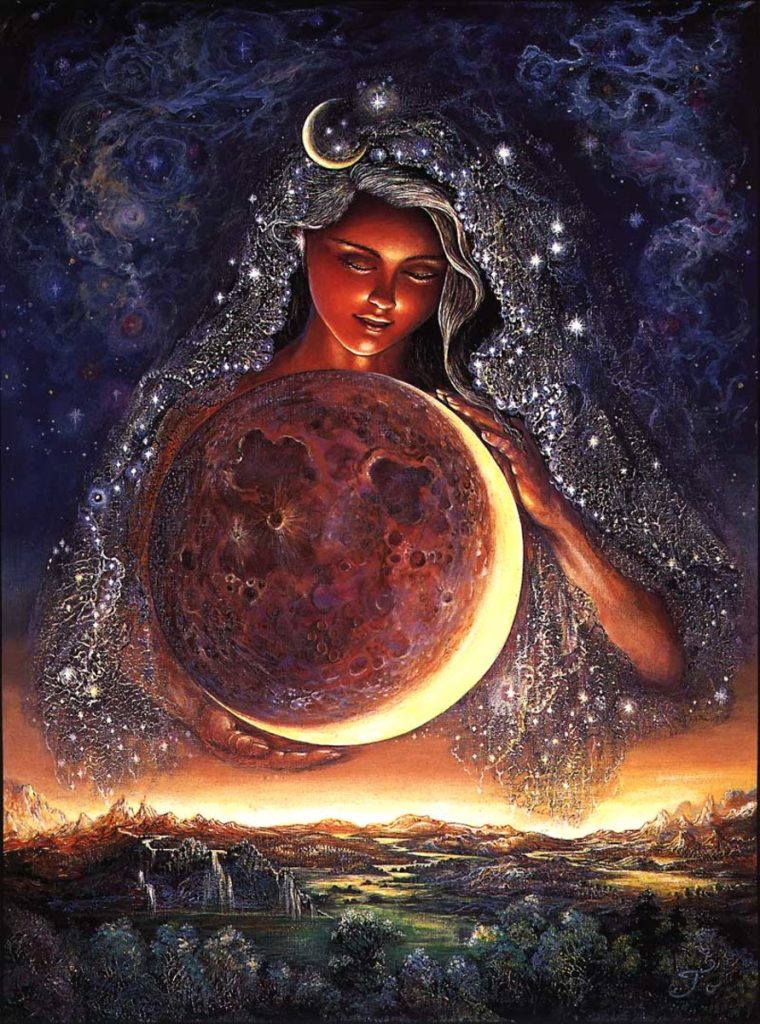The Moon, Earth’s celestial companion, has captivated humanity’s imagination since time immemorial. As a luminous beacon in the night sky, the Moon has inspired countless myths, legends, and folklore across cultures and civilizations. From tales of lunar deities and celestial lovers to stories of lunar creation and transformation, the Moon’s influence permeates the fabric of human culture, spirituality, and mythology. In this article, we will embark on a fascinating journey to explore the rich tapestry of Moon myths and legends from around the world, uncovering the timeless stories that reflect humanity’s deep connection with our closest celestial neighbor.
The Moon in Ancient Mythologies
Throughout history, the Moon has held a prominent place in the mythologies of diverse cultures, symbolizing a myriad of themes, including femininity, fertility, transformation, and the cycles of life.
- Lunar Deities: Many ancient cultures worshipped lunar deities, goddesses, and gods associated with the Moon’s phases, movements, and influence over nature. Examples include Selene in Greek mythology, Chandra in Hindu mythology, and Iah in Egyptian mythology.
- Celestial Lovers: The Moon often features in tales of celestial lovers, star-crossed romances, and divine unions, symbolizing love, passion, and the eternal bond between earthly and celestial realms.
Moon Creation Myths
The Moon’s origin has inspired a variety of creation myths, offering diverse explanations for its existence and relationship with Earth.
- Celestial Births and Transformations: Many cultures believed that the Moon was born from cosmic events, divine acts, or transformations, reflecting themes of creation, rebirth, and the cyclical nature of existence.
- Cosmic Connections: Some myths connect the Moon’s creation with other celestial bodies, deities, or cosmic events, weaving intricate narratives that explore the interconnectedness of the universe and humanity’s place within it.
Moon Cycles and Cultural Traditions
The Moon’s phases, from new moon to full moon and everything in between, have played a crucial role in shaping cultural traditions, rituals, and calendars.
- Lunar Calendars: Many ancient civilizations, such as the Mayans, Egyptians, and Chinese, developed lunar calendars based on the Moon’s cycles, guiding agricultural practices, religious ceremonies, and societal rhythms.
- Rituals and Celebrations: The Moon’s phases often coincide with specific rituals, festivals, and celebrations, symbolizing renewal, transformation, and the eternal cycles of nature.
Moon Folklore and Superstitions
The Moon’s influence extends beyond myths and legends to folklore, superstitions, and beliefs that have shaped human behavior, customs, and perceptions.
- Lunar Superstitions: Across cultures, the Moon has been associated with various superstitions, including beliefs about its effects on human behavior, health, and fortune, as well as its influence over natural phenomena, such as tides and weather patterns.
- Folktales and Moonlore: Folktales featuring the Moon as a central character or narrative element abound in world folklore, offering moral lessons, cultural insights, and entertaining stories that have been passed down through generations.
The Moon in Modern Culture and Science
In contemporary society, the Moon continues to inspire artists, writers, scientists, and explorers, shaping our understanding of the cosmos and our place within it.
- Literature and Arts: The Moon’s allure has been a perennial theme in literature, poetry, music, and visual arts, reflecting its timeless beauty, mystery, and symbolic significance in human culture.
- Scientific Exploration: Scientific missions, such as NASA’s Apollo program and ongoing lunar exploration efforts, have expanded our knowledge of the Moon’s geology, composition, and history, bridging the gap between mythological narratives and empirical understanding.
Conclusion
Moon myths and legends, woven from the threads of ancient cultures, beliefs, and imaginations, offer a window into humanity’s collective psyche, aspirations, and relationship with the cosmos. From ancient rituals and celestial romances to modern scientific discoveries, the Moon’s influence transcends time, culture, and boundaries, uniting us in a shared fascination with our celestial companion.
As we continue to gaze upon the Moon’s luminous face, explore its craters and landscapes, and ponder its mysteries, we are reminded of the enduring power of myth, the wonders of the natural world, and the timeless quest for understanding the universe’s secrets.
In celebrating the Moon’s rich tapestry of myths, legends, and cultural significance, we honor the diverse narratives that connect us to the cosmos, inspire wonder and curiosity, and illuminate the human spirit’s timeless journey of exploration, discovery, and connection with the vast, mysterious, and awe-inspiring universe that stretches beyond the horizon and beckons us to explore, dream, and reach for the stars.
Read More: The Fermi Bubbles: Giant Structures at the Center of the Milky Way
